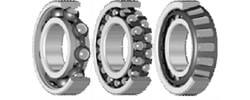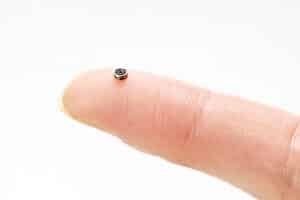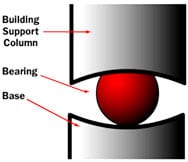Fakta om rullningslager
Kullager har rullkropparna av kulor. Rullager har rullkroppar av rullar. Nållager har små cylindriska nålrullar.
Kullagret uppfanns
Leonardo Da Vinci anses av många som kullagrets uppfinnare. Han tillverkade ett kullager som är likt det vi använder idag, men kullager av trä användes redan på romartiden. Cykeln satte fart på utvecklingen av kullagret i mitten på 1800-talet. Kullagerfabriker grundades i slutet på 1800-talet främst i Tyskland, men även i Storbritannien och USA. Världens första kullagerfabrik var FAG i Tyskland, vars grundare 1883 uppfann kulslipsprocessen som möjliggjorde serieproduktion av stålkulor, som var starten på rullningslagerindustrin.
Rullager uppfanns i USA och sfäriska kullager/rullager i Sverige
1898 uppfanns det koniska rullagret av Timken i USA. Det enradiga och dubbelradiga kullagret introducerades i Tyskland i början av 1900-talet. Sverige skulle få betydelse i utvecklingen genom maskiningenjören Sven Wingquists uppfinning. Han var en av grundarna till SKF 1907, dvs Svenska KullagerFabriken. Samma år uppfann han det flerradiga självreglerande radialkullagret, dvs det Sfäriska kullagret. Det lagret bestod av 2-3 kulrader, löpbanan hade en sfärisk form och den inre lagerringen kunde rotera kring sin egen axel och kunde även ställa sig snett i lagret, som gjorde att den kunde uppta avsevärda axiella krafter. 1918 uppfanns det Sfäriska rullagret av SKF, som kunde bära betydligt större axeltryck.
SKF grundade senare Volvo (”jag rullar” på latin) 1926 för att få konkurrensfördelar vid utveckling av nya lager för fordonsindustrin. ”Volvo” uppkom ursprungligen av namnet på ett SKF-kullager: ett enradigt spårkullager.
Nållager uppnådde ett industriellt genombrott 1949 med Schaefflers utveckling av nålkransar/nålhållare.
Både kullager och rullager är en av de stora uppfinningar som lade grunden till den snabba industriella utvecklingen under 1900-talet. De ingår idag i snart sagt alla typer av maskiner med roterande axlar.
Hur många kullager finns det i ett hushåll?
I ett modernt hushåll finns det idag mellan 100-200 lager i olika former: i tvättmaskinen, hårtorken, CD-spelaren, DVD-spelaren, datorn, laptopen, skrivaren, tv-spel, dammsugaren, vissa leksaker, köksfläkten, kökslådor, frysen, kylen, elvispen, microugnen, i de skjutbara dörrarna osv. Samt sedan tillkommer det många kullager för de som även har värmepump, cyklar, barnvagnar, bilar, skateboards, gräsklippare, högtryckstvätt osv.
Minsta och största kullagret
Kullager finns i otroligt många olika former och det finns hundratals tillverkare i världen. Det minsta kullagret som tillverkats har måtten 0,5×1,5×0,65 mm dvs 0,5 mm i axelmått, 1,5 mm yttermått och 0,65 mm bred. Det minsta kullagret som finns i serieproduktion har måtten 1x3x1 mm. Små kullager dvs Miniatyrlager används oftast inom medicinsk teknologi, men även elektroteknik, instrument, mekanik och flygteknik.
Det största lagret har en diameter på 13,3 meter och väger 70 ton, enligt SKF. Det sägs vara tillverkat för oljefältet Terra Nova utanför Kanadas kust. I detta oljefälts-torn förtöjs fartyg och lagret gör att fartygen lätt följer med rörelserna som vågorna och vinden ger.
Kullager och jordbävningar
Man kan också använda kullager till att jordbävningssäkra byggnader: San Francisco Airport använder avancerad teknologi för att motstå jordbävningar och en av dessa tekniker innebär gigantiska kullager. Byggnaden stöds av 267 pelare, som var och en vilar på en stålkula med en diameter på 1,5 meter. Kulan sitter i en konkav stiftelse. Om en jordbävning inträffar, kan marken flytta upp till 51 cm i någon riktning, dvs pelarna rullar på sina baser. Detta är ett effektivt sätt att skilja byggnaden från förflyttning av marken. Efter jordbävningen har upphört, går pelarna tillbaka till centrum av sina baser av gravitationskraften.



